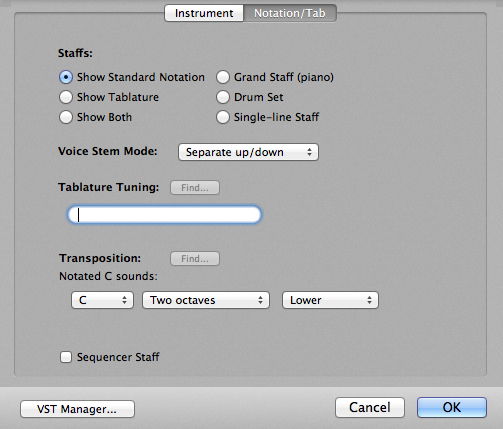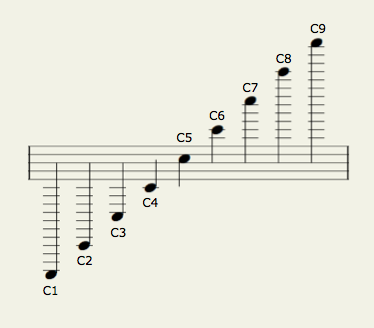elerouxx wrote:We clarinetists never, never read any clef other than treble.
wcreed51 wrote:treble . . . is the French tradition.
These are interesting bits of information that I managed to miss over half a century ago! I tried to play clarinet for about a year in elementary school, but (a) I kept getting blisters on my thumb and (b) I squeaked a lot; so I tried violin for a year, but it was worse and really squeaked; but then I discovered string bass, which was cool, except that the bass clef made absolutely no sense . . .
In retrospect, if someone had provided sheet music with the notes on a treble clef, then string bass would have made a lot more sense, because I knew the names of the notes and where they were located on string bass, but it all worked for the best, since I could play "by ear", and this soon led to getting work playing string bass in nightclubs, which for a 13 year-old was beyond awesome, and since I got the work through one of my friends who played piano; was 14 years-old; was married; had a house and car; read sheet music; and knew that I only understood treble clef but nevertheless knew all the notes on a piano, he played a bass note every once in a while to let me know when there was a weird chord coming up, which
in toto was a bit surreal, but so what . . .
So what! 
P. S. I do everything in NOTION 3 using treble clefs, and I set the octave used to play the notes via the staff setup preference or whatever it is called, where for example I set the treble clef for electric bass to play the notes two octaves lower, and I like this because here in the sound isolation studio there are only 12 notes and 8 or so octaves, which keeps everything
vastly simple . . .
 Treble Clef for Electric Bass ~ NOTION 3 Staff Settings, Notation Tab
Treble Clef for Electric Bass ~ NOTION 3 Staff Settings, Notation TabAnd regarding the way to differentiate all the treble clefs, one way is to key on the name of the instrument, which works nicely when you know the range of each instrument, but another way is to append the correct scientific pitch notation integer to a big "C", where for the regular treble clef one can use "C4" to indicate that "Middle C" actually is C4, where in contrast for the treble clef of an electric bass, you might want to use "C2", noting that "Middle C" here in the sound isolation studio is the C which is the note with a single line just below the treble clef, and once you learn the notes several lines below and above the treble clef, you have a range spanning over four octaves, which is plenty of notes, really . . .
[
NOTE: C0 is approximately 16.35-Hz, which is subsonic; and C9 is approximately 8372.0-Hz, which for all practical purposes is not so far from being supersonic, and when there is a properly tuned drumkit that has sizzled cymbals, playing the subsonic and supersonic stuff on other instruments tends to decrease overall sonic clarity, at least for DISCO and Pop songs, where the subsonic and supersonic stuff is handled differently, typically with carefully controlled synthesizers using various colors and flavors of noise . . . ]
 Treble Clef Octaves in Scientific Pitch Notation ~ 8 Octaves OnlyReally!
Treble Clef Octaves in Scientific Pitch Notation ~ 8 Octaves OnlyReally! But the truly
stellar aspect of NOTION 3 and staff transposition is that once you learn the notes from approximately C3 to C7, which basically requires learning the notes four or five lines below and above the treble clef, by configuring a treble clef to play notes one or two octaves lower or higher, you cover all the notes for most instruments, and at some point if you play grand piano then you can either (a) learn more notes or (b) switch to simple color-coding, where for example when a note is yellow, it is played an octave higher; when a note is white, it is played two octaves higher; but when a note is red it is played an octave lower; and when a note is blue, it is played two octaves lower . . .
The advantage of doing it this way is that it matches the most common musical instrument, which here in the sound isolation studio is a grand piano, where there is an additional rule, which is that every key has exactly one name, preferably where only sharps are used, because flats are strange . . .
Done this way, someone who is not a rocket scientist actually can do a logical mapping of keys on a grand piano to notes expressed in music notation . . .
Using an analogy, metaphor, or simile, the way having a virtual festival of clefs with special definitions works is like having the standard alphabet and a standard dictionary of words but when someone decides to start composing or reading poetry, they have to use a shifted alphabet and a shifted dictionary, where instead of writing and reading, "A rose by any other name would smell as sweet", they have to deal with "C tqug d(z+1) cp(z+1) qvjgt pcog yqwnf uognn cu uyggv" or something equally cryptic . . .
It probably made sense when everyone was writing music with feathers, ink, and parchment, or whatever, but we have computers and inkjet printers at the dawn of the early-21st century, and we also know a little more about acoustic physics, really . . .
Really! 

